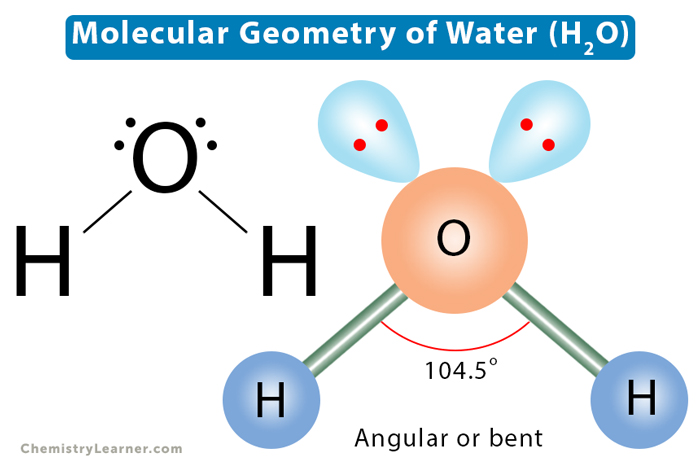Molecular Geometry of Water (H2O)
Water (H2O) molecule consists of one atom of oxygen (O) atom and two atoms of hydrogen (H). Oxygen has six valence electrons and requires two more to complete its octet. Hydrogen has one valence electron and requires one more to attain the electron configuration of its nearest inert gas neighbor, helium. Lewis structure of water shows that each hydrogen atom will form a single bond with the oxygen atom. Hence, oxygen will use two valence electrons to bond with hydrogen, leaving two lone pairs [1-4].
VSEPR theory is used to study the molecular geometry of water. The electron geometry of water indicates that it has a tetrahedral shape. However, its molecular geometry is different because of the lone pairs. According to VSEPR theory, the two lone pairs occupy positions as far apart as possible to minimize their repulsion. The electronic repulsion decreases according to the following order.
lone pair – lone pair > lone pair-bond pair > bond pair-bond pair
As a result, the O-H bonds will bend toward each other and away from the lone pairs. Water will acquire an angular or bent shape with a bond angle of 104.5°. This angle is less than the ideal tetrahedral bond angle of 109.5°. The VSEPR notation is AX2E2.
